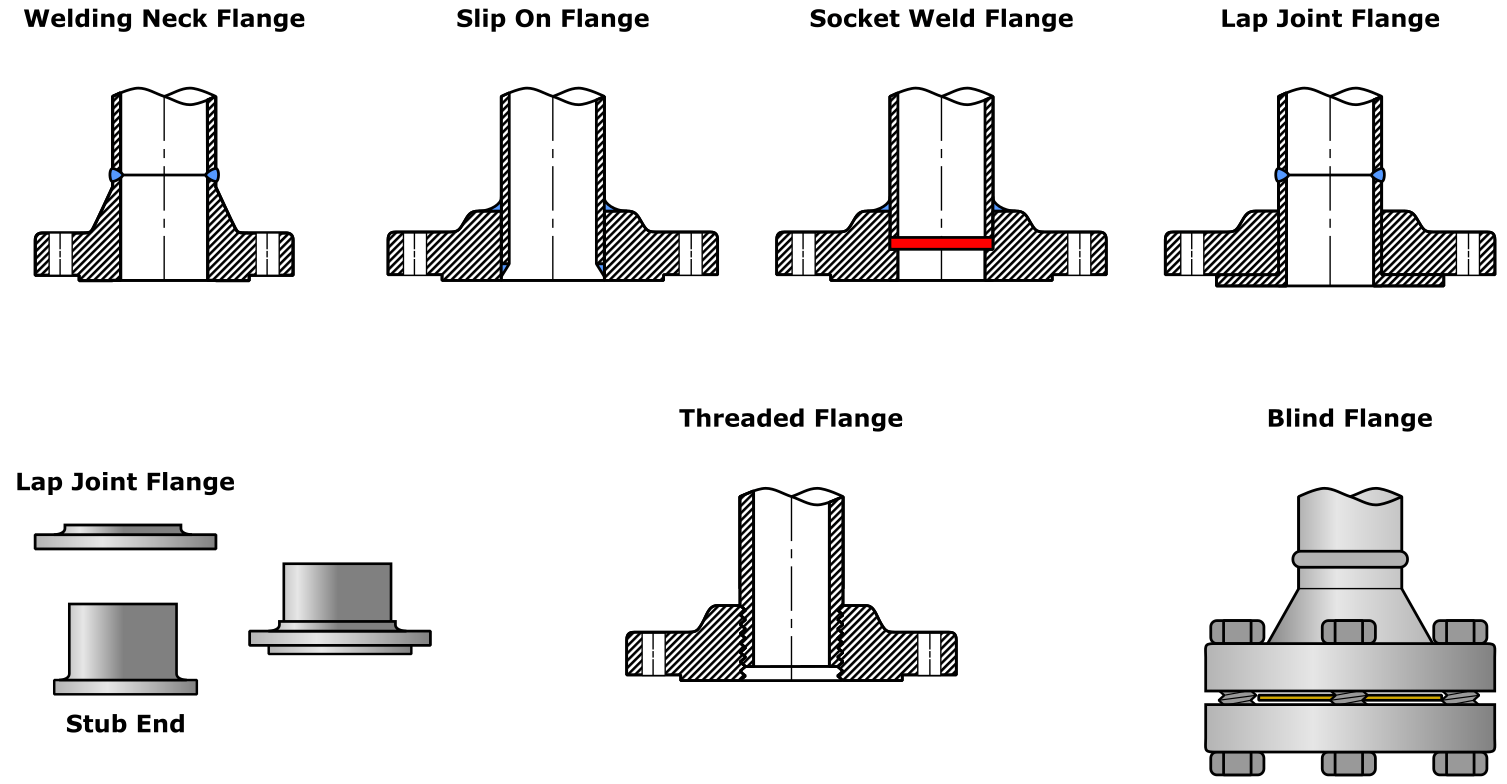Pipe Wall Thickness
During the iron pipe size (IPS) period, there were three main pipe thicknesses. These were Standard (STD)1, extra strong (XS), and double extra strong (XXS). Pipes with a lower pressure rating had a standard rated thickness. Medium pressure rated pipes had an extra strong rated thickness. Higher pressure piping used a double extra strong thickness rating.
As materials with higher mechanical strength and higher corrosion resistance properties were developed, it became possible to vary the thickness of pipes considerably. To accommodate the many pipe thickness sizes developed, the schedule (SCH) system was invented.
The schedule system standardises pipe thickness in the same way the NPS and DN systems standardise pipe sizes. Because the NPS system was developed prior to the DN system, the schedule system works in conjunction with the NPS system. Conversion tables allow for NPS to DN conversion, and for assigning a schedule to an NPS or DN designated size pipe.
|
Nominal Pipe Size (NPS) |
Diameter Nominal (DN) |
Outside Diameter |
Wall Thickness [inches, (mm)] |
||||
|
Sch. 5s |
Sch. 10s/20 |
Sch. 30 |
Sch. 40s/40 |
Sch. 80s/80 |
|||
|
½ |
15 |
0.840, (21.34) |
0.065 (1.651) |
0.083 (2.108) |
0.095 (2.413) |
0.109 (2.769) |
0.147 (3.734) |
|
¾ |
20 |
1.050, (26.67) |
0.065 (1.651) |
0.083 (2.108) |
0.095 (2.413) |
0.113 (2.870) |
0.154 (3.912) |
|
1 |
25 |
1.315, (33.40) |
0.065 (1.651) |
0.109 (2.769) |
0.114 (2.896) |
0.133 (3.378) |
0.179 (4.547) |
|
1¼ |
32 |
1.660, (42.16) |
0.065 (1.651) |
0.109 (2.769) |
0.117 (2.972) |
0.140 (3.556) |
0.191 (4.851) |
|
1½ |
40 |
1.900 (48.26) |
0.065 (1.651) |
0.109 (2.769) |
0.125 (3.175) |
0.145 (3.683) |
0.200 (5.080) |
|
2 |
50 |
2.375 (60.33) |
0.065 (1.651) |
0.109 (2.769) |
0.125 (3.175) |
0.154 (3.912) |
0.218 (5.537) |
|
2½ |
65 |
2.875 (73.03) |
0.083 (2.108) |
0.120 (3.048) |
0.188 (4.775) |
0.203 (5.156) |
0.276 (7.010) |
|
3 |
80 |
3.500 (88.90) |
0.083 (2.108) |
0.120 (3.048) |
0.188 (4.775) |
0.216 (5.486) |
0.300 (7.620) |
Pipe Size and Schedule Table2
1‘Also called ‘Standard Weight’.
2Source: https://en.wikipedia.org/wiki/Nominal_Pipe_Size
Schedule (SCH)
Common schedule numbers are 5, 10, 20, 30, 40, 60, 80, 100, 120, 140, & 160. The most common schedule numbers are 40 and 80. Schedule numbers followed by an ‘S’, indicate a schedule number for usage with stainless steel pipes. The thickness of a pipe’s wall is sometimes abbreviated as WT, which means ‘wall thickness’.

Pipe Dimensions
The outside diameter of a given pipe size is not affected by the schedule number, whilst the inner diameter is affected by the schedule number. A larger schedule number indicates a thicker pipe wall. A smaller schedule number indicates a thinner pipe wall.
- For a given pipe size, a larger schedule number indicates a thicker pipe wall and smaller inner diameter.
- For a given pipe size, a smaller schedule number indicates a thinner pipe wall and larger inner diameter.

Pipe Schedule Number Comparison
The above image shows that the outside diameter of a pipe is not affected by a change in schedule number, but the inner diameter is. Thicker pipe walls are used to withstand higher service pressures, thus the schedule number is indicative of the service pressure at which the pipe will operate.
Higher Schedule Number = Thicker Pipe Wall = Higher Service Pressure
Flange Schedule
The schedule of a flange is relevant only for welding neck and lap-joint flanges because the schedule of these flanges must match the associated pipe schedule to which they are connected. Other flange types either slide partly into, screw into, or penetrate through, their associated flange, thus the flange schedule does not need to match the pipe schedule.
The different flange types will be discussed in a later section, notice in the image below though that the welding neck and lap joint flange types are connected to their associated pipes in a manner in which the other flange types are not. It is because of this style of connection that the pipe schedule is important for these two flange types.

Flange Types
Tip - it is possible to connect a welding neck or lap-joint flange to a pipe with a different schedule providing the pipe end is chamfered.
Related Online Engineering Courses
Introduction to Steam, Boilers and Thermodynamics
Additional Resources
https://en.wikipedia.org/wiki/Nominal_Pipe_Size
https://www.trupply.com/pages/socket-weld-flange
https://www.theprocesspiping.com/nominal-pipe-size-and-schedule
